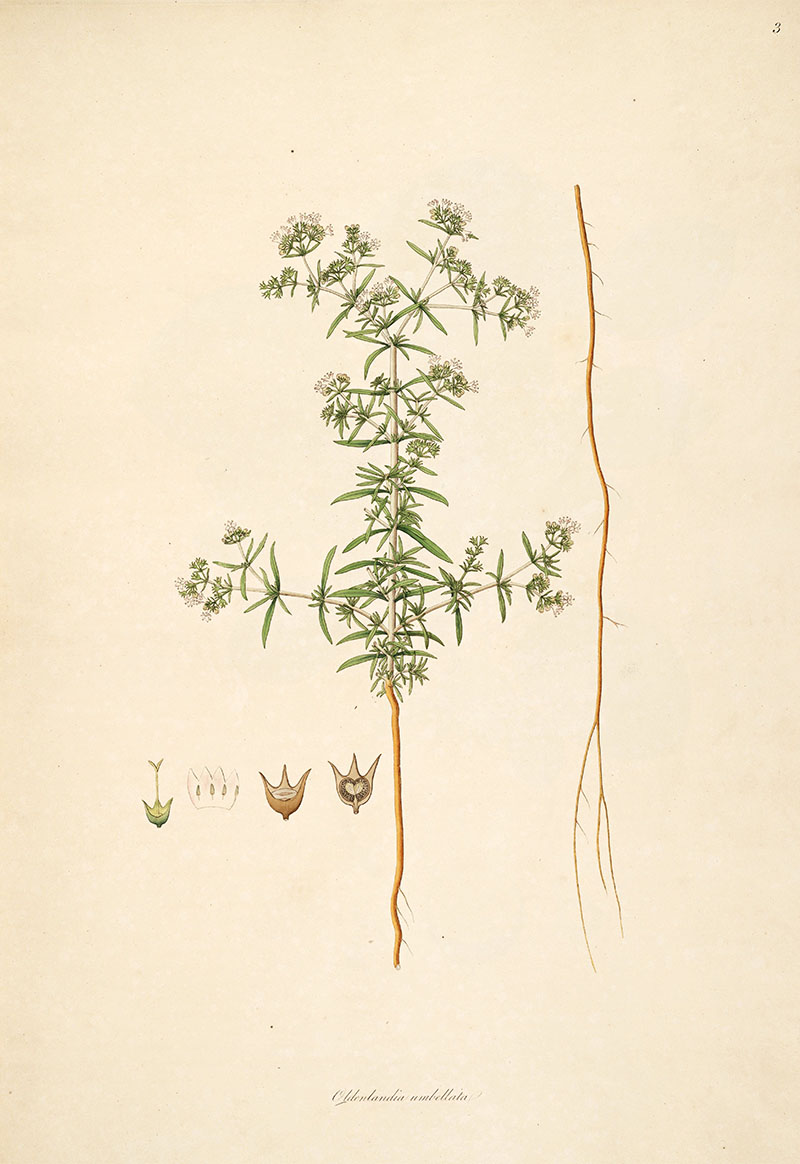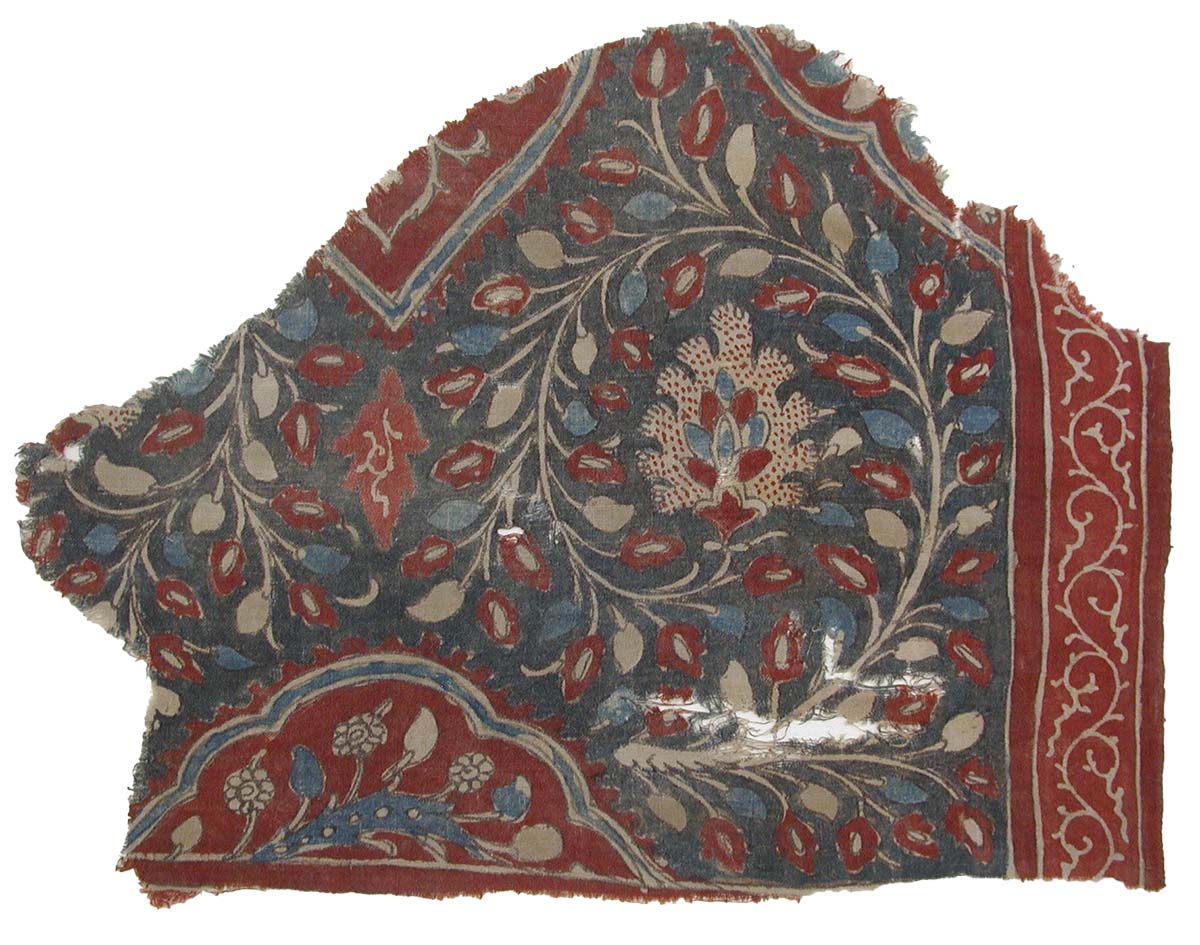A natural red colourant, chay root dye is derived from the chay plant (Oldenlandia umbellata), which is native to parts of Bengal; Puri, Odisha; Golconda, Telangana; the banks of the Krishna delta in Andhra Pradesh; and northern Sri Lanka. The dye was used from at least the seventeenth century onwards primarily in the southern states of Andhra Pradesh and Tamil Nadu on kalamkari and chintz cloth.
Historical evidence of chay cultivation and dyeing is available only from the seventeenth century onwards, predominantly in the form of European travellers’ accounts that reveal attempts to gain information on Indian methods of extracting and applying the dye for use in their home countries. Chay root was extensively cultivated in Sri Lanka under Dutch and British colonial rule, where members of the non-dominant Verkuthi caste harvested the roots under bonded labour arrangements.
The bark of the chay root contains alizarin, which produces the dye’s red colour. The root is boiled in water with an alkali, which extracts the alizarin from the bark and turns the solution red. The cloth to be dyed is painted with a mordant solution, usually alum, according to the planned design. After soaking it in the dyebath, the cloth is removed and the excess dye rinsed off, after which only the areas with the mordant retain the red colour. If the design involves dyes that do not need a mordant, such as indigo, an additional wax-resist step is included.








